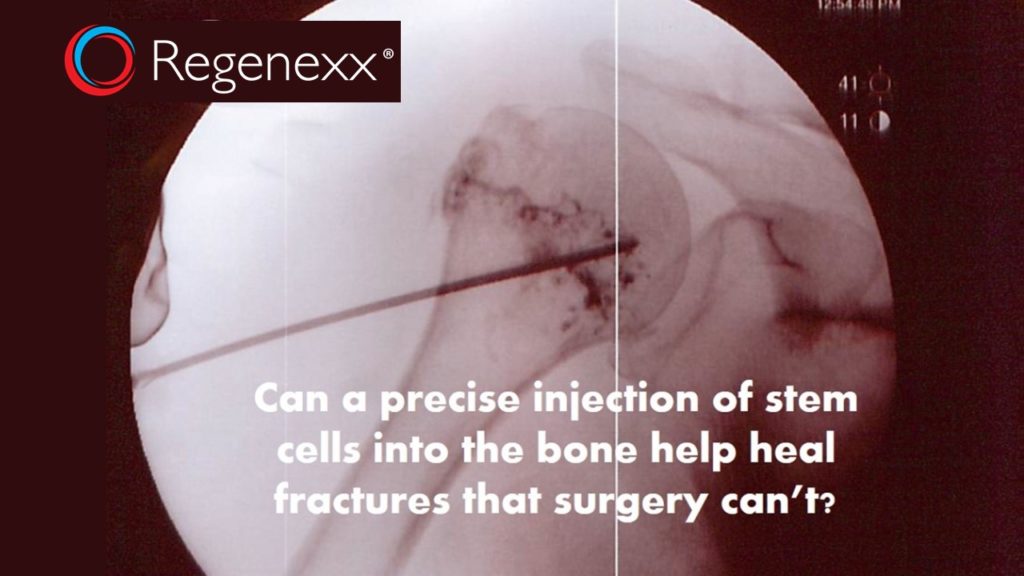Bone Healing Help: Can a Stem Cell Injection Heal a Fracture that Surgery Won’t Touch?
You won’t see the above picture in many places in the world. What does it show? A 15 gauge specialized needle precisely injecting stem cells under fluoroscopic guidance into a horribly fractured and non-healing shoulder bone – in other words bone healing help. Why do this type of procedure? This is a fracture that’s so horribly fragmented that surgery can’t help it heal.
Fractures normally heal, but when they don’t, it can be a mess. When a fracture doesn’t heal, it’s called a non-union or a delayed union. Most commonly, surgery is used to place a bone graft or some biomaterial in the fracture area and electromagnetic bone simulators are used to try and help the bone mend. Sometimes hardware screws and plates can be used to help hold the broken and unhealed bone pieces together. However, when a fracture has many pieces, there are few options, as it’s not productive to place more hardware by volume than there is bone.
The above patient found herself in that unenviable position. After fracturing her shoulder in a fall, she was told that there just too many fragments of her humerus bone to operate on and that despite no healing over many months, that she should wait longer to see if this would heal. There were several different intersecting fracture lines that created 6 or 7 distinct bone pieces. In clear need of bone healing help, she sought out our clinic due to our extensive decade long experience using precise stem cell injections into bone to help fractures heal. The above picture shows a 15 gauge specialized needle and the contrast flowing into the many fracture lines, soon to be followed by her own bone marrow stem cells.
The upshot? We’re thankful to have more stem cell injection fracture healing experience than any other clinic in the U.S. In fact, we’ve published on one fracture non-union stem cell technique we use. For this woman, there are no surgical options. Many patients also find themselves with poor surgical options. It’s very disconcerting as a patient to know that you have bones that are disconnected. Hopefully we’ll be able to help this fracture non-union patient like we’ve been able to help other patients.

NOTE: This blog post provides general information to help the reader better understand regenerative medicine, musculoskeletal health, and related subjects. All content provided in this blog, website, or any linked materials, including text, graphics, images, patient profiles, outcomes, and information, are not intended and should not be considered or used as a substitute for medical advice, diagnosis, or treatment. Please always consult with a professional and certified healthcare provider to discuss if a treatment is right for you.

